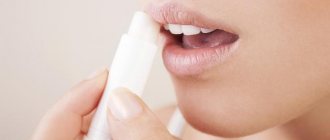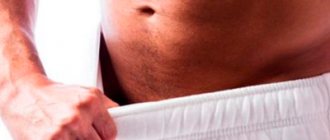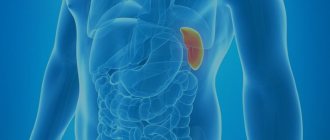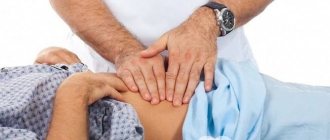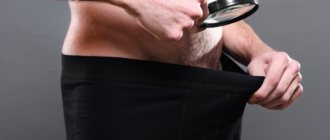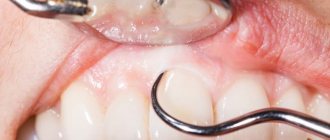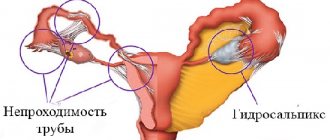Angulitis, which is popularly called seizures, is considered by many to be a childhood disease, but this is far from the case.
Such painful wounds, covered with a dry crust and located in the corners of the mouth, also occur in adults, just less frequently than in children. When a seizure occurs, many people try to mask it using various cosmetics, which should not be done, as this leads to a worsening of the condition.
At the initial stage, the disease is asymptomatic, and only in rare cases a small bubble of liquid may appear at the site of the future wound. More often, a person realizes that he is sick only at the moment when, due to unexpectedly formed ulcers and cracks on the skin, it becomes painful to eat and speak. Any opening of the mouth begins to be accompanied by pain of varying intensity.
To treat seizures, both medications and folk remedies can be used with high efficiency.
Description of the pathology
The appearance of an inflammatory process in the body, indicating injury to the mucous membrane or skin in the corners of the mouth, experts call angulitis. Among patients suffering from an unpleasant pathology, another name for the disease is common: seizures.
Angulitis is not dangerous to human health: jams cause pain when opening the mouth and aesthetic discomfort when communicating with other people.
At the initial stage, itchy microcracks appear on the lips, which, if left untreated, turn into bleeding wounds. If you ignore their appearance, the jams may not heal for a long time. Treatment at an early stage of pathology development will prevent the formation of purulent ulcers at the site of cracks.
What it is?
Zaeda is an inflammation of the skin and mucous membrane in the corners of the mouth, which occurs very often at any age, in almost everyone. In addition to the skin, the mucous membrane of the mouth can also be affected when jammed. Of course, jam is not a medical term, but a folk one, but it has become so integrated into the medical terminology of Russian-speaking doctors that the real names of this pathology can rarely be heard.
Medical names for zayeda:
- Angulite;
- Angular cheilitis (cheilitis - inflammation of the lips);
- Angular stomatitis;
- Slit-like impetigo (streptococcal infection).
And angulitis received the name “jam” because it was previously believed that the corners of the mouth became inflamed when a person ate something wrong or overate (“jaze” - because of food).
So, a jam is usually a skin defect, which is accompanied by discomfort, an annoying flaw in the mirror, and does not pose any danger to human life and health. But angulitis can also be a symptom and manifestation of other diseases, for example, stomatitis, lack of vitamins or reduced immunity. Therefore, in any case, you should pay attention to the condition of your lips.
What types of ointments are used?
To get rid of unpleasant sensations and aesthetic defects, you should smear the wounds with special products. Their selection should be taken responsibly. It is important to know the nature of angulitis.
If bumps on the skin in the corners of the lips are the result of fungal growth or a viral infection, then antimicrobial agents will not help cure them. Depending on the cause of the jam, getting rid of the pathological process should occur using different types of means:
- Antifungal medications treat angulitis caused by candida fungal infection.
- Antiseptics will help get rid of irritation in the corner of the lips caused by pathogenic bacteria. For severe inflammation, topical antibiotics are used.
- Antiviral drugs are effective in treating seizures caused by a viral infection.
Sometimes the cause of redness is stress or a lack of vitamins. In this case, to get rid of the pathology, you should change your lifestyle.
Causes
In adults, seizures usually appear during the cold season, when the activity of metabolic processes in the body decreases. One of the predisposing factors is the presence of chronic somatic diseases, which are characterized by seasonal exacerbations. A weakened immune system leads to increased activity of opportunistic microflora.
The immediate cause of seizures due to decreased immunity are:
- bacteria (mainly streptococci);
- yeast-like fungi of the genus Candida;
- viral infection (most often the herpes virus).
Please note: external factors leading to jamming include prolonged wetting of the corners of the mouth with saliva due to malocclusion and hypersalivation (increased salivation). In this case, maceration (impregnation with liquid and softening) of the skin occurs.
Factors contributing to the activation of microflora:
- ARVI (including influenza);
- general hypothermia;
- overheating of the body;
- prolonged exacerbations of chronic pathologies;
Zaeda can appear after direct contact with a sick person (for example, when kissing) or when using his dishes and personal hygiene products (toothbrushes, etc.).
Reasons for seizure also include:
- skin microtraumas;
- dry skin;
- low level of hygiene (especially with pathological occlusion, use of braces and carious lesions);
- hypovitaminosis, in particular – vitamin B2 deficiency in the body.
Some diseases (for example, diabetes) can prolong the healing process of lesions and complicate their course.
Seizures usually appear during the cold season, when the activity of metabolic processes in the body decreases. One of the predisposing factors is the presence of chronic somatic diseases, which are characterized by seasonal exacerbations. A weakened immune system leads to increased activity of opportunistic microflora.
The immediate cause of seizures due to decreased immunity are:
- bacteria (mainly streptococci);
- yeast-like fungi of the genus Candida;
- viral infection (most often the herpes virus).
Please note: external factors leading to jamming include prolonged wetting of the corners of the mouth with saliva due to malocclusion and hypersalivation (increased salivation). In this case, maceration (impregnation with liquid and softening) of the skin occurs.
Factors contributing to the activation of microflora:
- ARVI (including influenza);
- general hypothermia;
- overheating of the body;
- prolonged exacerbations of chronic pathologies;
Please note: seizures can appear after direct contact with a sick person (for example, when kissing) or when using their utensils and personal hygiene products (toothbrushes, etc.).
Reasons for seizure also include:
- skin microtraumas;
- dry skin;
- low level of hygiene (especially with pathological occlusion, use of braces and carious lesions);
- hypovitaminosis, in particular – vitamin B2 deficiency in the body.
Important: some diseases (for example, diabetes) can prolong the healing process of a seizure and complicate its course.
Review of antifungals
The process of completely getting rid of a candida fungal infection takes a lot of time. To treat cracks in the corners of the lips, the following will help:
| Drug name | Active substance | Description | How to treat |
| Nystatin ointment | nystatin | The active substances have a destructive effect on fungal cells. | Apply twice a day in a thin layer to the problem area. Treatment should be continued for 7-10 days. Sometimes the treatment period can be extended to 1 month. Contraindications include pregnancy. |
| Levorin ointment | levorin | It has a high chemotherapeutic effect against fungal spores. | Apply 2 to 4 times a day to infected areas of the skin and mucous membranes. The course of treatment is 10-14 days. |
| The drug Clotrimazole | clotrimazole | Promotes active destruction of fungal cells. Prevents complications from angulitis. | Apply to a previously cleaned and well-dried area of skin. Use 1-3 times a day. The course of treatment is 1 month. |
The listed drugs are effective in treating fungal infections. But they are not recommended for use in case of bacterial infection.
Use of ointments D-Panthenol and Bepanten
The active ingredient of D-Panthenol is a derivative of pantothenic acid, dexapanthenol. Penetrating into the layers of the affected skin, dexapanthenol begins to act like vitamin B5.
The substance actively participates in vital metabolic processes.
Dexapanthenol also supports the natural functions of the upper layers of the epithelium, increasing the rate of skin regeneration. When the integrity of the skin is compromised due to the appearance of jams in the corners of the mouth, the need for dexapanthenol increases several times. You can replenish it by choosing D-Panthenol for treatment. How D-Panthenol works for angulitis:
- normalizes metabolism at the cellular level;
- increases the strength of collagen fibers;
- improves regenerative processes;
- is an anti-inflammatory agent.
Bepanten is considered an analogue of D-Panthenol. The active ingredient in both products is the same. After applying Bepanten, a person with an infection on the lips feels a slight cooling effect, which helps reduce pain. How often it is used: apply a thin layer of the drug to the site of infection three times a day. The course of treatment is 7-10 days.
10 reasons for cracks in the corners of the mouth
The condition of the lips (their soreness, appearance) is one of the indicators of human health. Peeling, dryness, pallor, as well as cracks in the corners of the mouth can be not only a cosmetic defect resulting from physical damage and weather conditions, but also a companion to certain diseases and disorders in the body, and then treatment is required. Let's look at 10 reasons for the appearance of angular cracks (jams) in the corners of the mouth and ways to eliminate them.
Traumatization
Traumatization of the area around the lips leads to the appearance of cracks, causing an annoying feeling of dryness, tightness of the skin, and pain. The most common cause of damage is regular visits to the dentist, during which a person has to stretch his lips and open his mouth too wide. This is especially true when a doctor uses an instrument, such as an examination mirror, carelessly. Sometimes, after prolonged treatment by the dentist, the crack simply fails to heal.
In addition, similar problems can arise when using removable dentures: when they are inserted and removed, it is the area of the corners of the lips, which is particularly sensitive, that is most injured.
For quick healing in such cases, it is recommended to apply a complex of vitamins A and E to the damaged areas and make lotions from medicinal herbs (sage, calendula, chamomile).
Poor oral hygiene
Penetration of infections into microcracks in the skin due to insufficient hygiene of the body and oral cavity also often causes inflamed wounds in the corners of the mouth - especially in children who touch their faces with dirty hands. Frequent occurrence of angular cracks due to bacterial load also affects people who neglect regular brushing of their teeth and gums.
Adverse weather conditions
Dry, windy weather, frost, and arid heat are common causes of flaking and tightness of the skin in the mouth area, which, if it is not sufficiently moisturized, can lead to the formation of an inflamed crack. It is easy to prevent its occurrence by caring for the sensitive area: daily applying nourishing cream or Vaseline before going outside.
Avitaminosis
A lack of vitamin B12 in the body can cause angular fissures, and with them swelling and redness of the lips, inflammation of the tongue, conjunctivitis, and burning in the eyes. This condition is observed in spring vitamin deficiency, insufficient intake of the vitamin from food and in diseases that lead to disruption of its absorption by the body. In the first two cases, it is recommended to compensate for the lack of vitamin by including in the diet a sufficient amount of meat and dairy dishes, eggs, cabbage, spinach, legumes, and whole grain cereals. In the latter case, you need to see a doctor and undergo a course of treatment.
Fungal skin lesions
Cracks in the corners of the mouth can be fungal in nature - for example, caused by the Candida fungus. The disease is often provoked by reduced immunity due to past illnesses or the presence of general diseases (gastrointestinal pathologies, diabetes mellitus, blood diseases, etc.), taking antibiotics, cytostatics, hormonal drugs. Candidomycotic or yeast infection is usually covered with a grayish-white coating, which is easily removed with a napkin; there is no crust. Treatment of the fissure is carried out with the help of nystatin, levorin or other special ointments, and in severe cases it is accompanied by taking antimycotic drugs orally. A doctor should prescribe medications to treat fungal infections.
Syphilis
One of the elements of primary syphilis - chancre - is often disguised as an ordinary syphilis. In this case, the crack is usually painless, covered with a silvery-white coating and has a compaction at the base, which, when the lips are stretched, takes on an oval shape. When a secondary infection (bacterial or streptococcal) is added, the syphilitic lesion deepens and turns into a discomforting ulcer. Treatment of such a disorder is carried out under the supervision of a venereologist and consists primarily of destroying the causative agent of syphilis - Treponema pallidum.
Iron-deficiency anemia
Low hemoglobin is one of the common causes of cracks in the corners of the mouth. In the presence of the disease, the ulcer is often accompanied by general weakness, pallor, rapid heartbeat, shortness of breath and other symptoms. Treatment of angular fissure in anemia should be accompanied by the elimination of iron deficiency in the body, depending on its cause: eating foods rich in iron and vitamin B12 (whole grain bread, fruits, red meat, nuts, greens), taking special medications, antiparasitic therapy (in the presence of worms ) and other methods.
Diseases of internal organs
Sometimes chronic and recurrent binge eating can accompany some common diseases - for example, endocrine diseases, diseases of the cardiovascular system, gastrointestinal tract, and even disorders in the psycho-emotional sphere. In this case, the ulcer is usually soft to the touch, covered with a crust and is moderately painful. Elimination of the crack is possible with full treatment of the disorders that caused it. It is worth noting that it is not recommended to treat a stubborn crack in the corner of the mouth on your own - according to doctors’ observations, in 3% of cases it can become malignant.
Atopic cheilitis
Atopic cheilitis is an inflammatory disease of the lips, which often leads to the formation of a lip. The disease is neurodermatological in nature and can be provoked by allergies, hormonal disorders, but most often by malfunctions of the nervous system, which is why it is most common in children and adolescents aged 10-17 years. A crack in the disease occurs against the background of peeling, dry skin of the lips and face; Inflammation of the lip border and covering of their surface with small scales are also observed. For atopic cheilitis, vitamin therapy, treatment with antihistamines, and corticosteroid ointments are carried out in strict accordance with the doctor's prescription.
Bad habits Bad habits are common sources of health problems, and the symptom in question is no exception. Smoking, drinking alcohol, licking lips, biting nails, holding a foreign object (pencil, pen) in the mouth contribute to a decrease in both general and local immunity. When the harmful effects cease, cracks that arose for the above reasons quickly heal and stop appearing.
Use of the drug Levomekol
In its effect on the affected skin, Levomekol is similar to D-Panthenol. Levomekol contains substances that are active against gram-positive bacteria, which cause the appearance of angulitis. Levomekol reduces inflammatory processes and fights pathogenic microflora. Its components quickly penetrate into the deep layers of the epidermis and act as stimulators of recovery processes.
The active antimicrobial effect of Levomekol persists even if purulent processes begin in the areas of infection. How to use: apply the product 2-3 times a day. Improvements occur on the second day after starting use. A specific bitter taste may remain in the mouth. After using Levomekol, you should not drink hot liquid or eat food.
No contraindications for use have been identified. People prone to allergic reactions in rare cases experience skin rashes and slight swelling. If you stop using the drug, the skin reactions will disappear immediately. Levomekol can be used to treat seizures in adults and children. You can purchase the drug at any pharmacy without a prescription.
Diagnostics
After a physical examination with the collection of complaints, a visual examination of the oral cavity and problem areas of the skin, and clarification of the supposed causes of the pathology, appropriate diagnostic measures will be prescribed aimed at identifying the disease that led to such manifestations
Necessary diagnostic methods:
- Bacterial seeding of the contents of conflict with identification of the pathogen and determination of its sensitivity to chemotherapeutic drugs.
- Analysis of immune status to determine functional and quantitative indicators of the state of the immune system.
- Serological studies. Prescribed to identify the cause of seizures, for example, to determine antibodies to the pale spirochete that appear with syphilis.
- Dermatoscopy is a visual assessment of pathologically changed areas of the skin using a digital or optical dermatoscope, which repeatedly magnifies the tissue being examined. The study is necessary for the differential diagnosis of a seizure with a nevus, malignant neoplasm, hemangioma, etc. Prescribed for suspected streptococcal impetigo.
- Skin pH-metry is a diagnostic method that allows you to determine the acid-base balance of the skin using special pH meters. The disease is detected depending on whether the displacement has occurred into an alkaline or acidic environment. Alkalinization of the epidermis occurs in eczema and atopic dermatitis. A shift to the acidic side indicates psoriasis.
- Histology and cytology of altered skin. These are optional studies carried out according to indications to exclude an oncological process.
Based on the suspected cause of the cracks, you may need to consult a venereologist, endocrinologist, neurologist or allergist.
How to treat seizures with Metrogyl Denta?
Experts recommend treating angulitis with the drug Metrogyl Denta, which is actively used in dental practice. The effectiveness of the product for seizures is confirmed by the presence of two active components in its composition: the antiseptic chlorhexidine and the antimicrobial drug metronidazole.
Chlorhexidine has increased activity against gram-positive and gram-negative bacteria. After applying the drug to the infected area, a thin film forms on the skin. It provides long-term exposure to the active substance. Metronidazole is used to treat diseases that are caused by the proliferation of harmful microorganisms. Its action is to damage the DNA chains of bacteria. Chlorhexidine helps speed up the recovery process of the skin.
How to use Metrogyl Denta: apply a thin layer of the drug to the cracks in the corner of the mouth twice a day. Used in adults over 18 years of age. It is not recommended to use the product to treat seizures in children.
How to use Teymur's paste?
An effective antiseptic, Teimurova paste gently dries the affected areas of the skin and pleasantly deodorizes them. Active substances included in the ointment:
- salicylic and boric acid;
- sodium tetraborate;
- lead acetate;
- mint oil;
- zinc oxide.
Thanks to the action of these substances, after the first application of the ointment, erosive areas dry out and cracks in the skin soften. The product helps to destroy pathogenic bacteria and relieve the inflammatory process. Medical practice shows that the use of paste is effective in the presence of fungal infection. The components of the drug reduce pain, cool the skin and dilate blood vessels to improve blood flow.
The paste is applied to the dried area of the skin in the corners of the lips in a thin layer. The drug is gently rubbed into the affected area for 2-3 minutes. Use twice a day for 1-2 weeks. Contraindications include: childhood, pregnancy and lactation.
Symptoms and diagnosis of seizure
Laboratory testing helps determine the exact cause. In a scraping taken from the affected area of the skin, the presence of fungi is determined. A negative result indicates the absence of candidiasis. In a general blood test, the level of hemoglobin is determined to exclude anemia, the level of leukocytes and ESR to exclude an inflammatory reaction, and the blood is also examined for sugar in order to exclude diabetes.
For a more accurate diagnosis, it is necessary to perform the Wasserman reaction to identify streptococcal infection, excluding syphilis.
Streptococcal infection is most often diagnosed in children. At the very beginning of the disease, blisters with a thin covering appear in the corners of the mouth, after a short period of time they burst, and in their place there remains erosion in the form of a gap, on the surface of which a bloody crust with caked pus forms. After removing the crust, you can notice a bleeding wet surface, often with a crack located in the middle; after a couple of hours, the erosion becomes covered with a crust again. Opening your mouth in the midst of a pathological process may cause slight pain.
Read more: eating in children
Candidiasis is accompanied by the appearance of bright red erosion in the corners of the mouth, around which a fringe of the epithelial layer can be seen. In some cases, the affected area becomes covered with a whitish coating, which can be easily removed. A characteristic symptom of seizures caused by yeast-like fungi is the absence of crusts on the surface of the wounds. When the mouth is closed, painful areas may be hidden by an overhanging fold of skin. The disease may be accompanied by frequent relapses and have a chronic course.
Zinc ointment for the treatment of angulitis
You can cure seizures with zinc ointment. The active substance is zinc oxide. It has a powerful antiseptic and drying effect. After applying the product, the intensity of the release of purulent exudate decreases, and inflammatory symptoms decrease. Irritated areas of the skin are calmed, and the necessary protective layer is formed from repeated damage by harmful microorganisms.
Apply a small amount of product to the affected areas. It is applied with a cotton swab and gently rubbed until completely absorbed. Contraindications include individual intolerance to zinc oxide. If signs of skin rashes, itching and hyperemia appear, use of the ointment should be stopped immediately.
Application of Vishnevsky ointment
The active ingredients of the product are castor oil, birch tar and xeroform. The ointment relieves inflammation and acts as a good antiseptic. When a small amount of the drug gets on irritated skin, the action of the receptors is activated. This leads to improved blood supply to the affected areas.
Blood circulation stimulates the healing process of the skin and mucous membranes.
When the product is applied to a wound, it is important to be careful: Vishnevsky ointment should not come into contact with the oral mucosa.
After using it, you must wash your hands well to avoid getting the healing ingredients into your nose and eyes. If, through negligence, the product gets on the mucous membrane, you need to rinse your mouth with plenty of clean water.
Types of pathology and clinical manifestations
Seizures are represented by several main options, represented by:
Exfoliative form
The pathology is limited to inflammation of the red lip border with peeling, and is more often recorded in women. The source of cheilitis formation is considered to be:
- depression;
- anxiety;
- activation of the thyroid gland;
- disruptions in immunity;
- hereditary predisposition.
The disease takes two forms:
- dry – with increased dryness, burning and scales on the lips, lasts for years, has no tendency to self-heal;
- exudative - determined by pain, swelling, abundant crusts.
In the latter case, patients find it difficult to speak or eat.
The exudative form of exfoliative cheilitis is characterized by severe pain,
Atopic
The causes of the formation of diffuse neurodermatitis are:
- cosmetics and medicines;
- food products;
- heredity with allergies;
- bacteria.
The deviation is manifested by itching, hyperemia, exfoliation of skin particles and damage to the corners of the mouth. After completion of the acute phase, peeling with dryness develops, causing cracks.
Glandular
Cheilitis develops against the background of a congenital or acquired anomaly of the salivary gland, and is activated by the penetration of infectious agents. Zaeda occurs in people over 30 years of age; the upper lip is affected less frequently than the lower lip by a factor of 2. The pathology begins with dryness, then erosions, cracks, and weeping form.
Candida
Fungal infection occurs with reduced immunity and prolonged antibiotic therapy. Symptoms include the appearance of dry patches on the corners of the mouth, films with a grayish or whitish tint, the removal of which leads to bleeding and thinning of the surface of the lips. Burning and tightness accompany the opening of the mouth; licking worsens the pain. Lack of therapy causes transition to a chronic disease with frequent relapses.
Contact allergic
The deviation is provoked by the chemical composition of dentures, cosmetics, contact with writing instruments, etc. The jam leads to irritation, swelling, and hyperemia. With inflammation, rashes form, the opening of which ends in erosions with cracks.
Meteorological
The disease is registered in men from 20 to 60 years old and develops with increased sensitivity to wind, frost, sun, and radiation. The exudative form of cheilitis causes itching, burning sensation, crusts, erosive spots, small blisters, and pain. Dry - dryness, discomfort. Precancerous forms may appear with a constant source of irritation, including dust, humidity, and smoking.
Hypovitaminosis
It is formed due to a deficiency of B vitamins and is manifested by burning and dryness on the mucous surfaces of the lips, mouth, and tongue. After the formation of small scales, vertical bleeding cracks, inflammation and an increase in the volume of the tongue occur.
Macrocheilitis
The disease is combined with folded tongue syndrome and neuritis of the facial nerve. Appears under the influence of infections and allergens, with genetic predisposition. Patients experience an increase in lip size and swelling of nearby facial tissues. In the affected area, the dermis has a bluish-pinkish tint. The face tilts to the healthy side, the nasolabial fold is smoothed out.
Only a doctor can clarify the correct type of jam after a diagnostic examination.
How to treat with antibiotics?
Tetracycline ointment is known for a wide range of applications, due to the active action of its constituent components against various bacteria. The ointment is classified as a local antibiotic. The product applied to the infected area helps slow the growth of pathogenic microorganisms by disrupting protein production.
The active ingredient is the antibiotic tetracycline. It is active against staphylococci, salmonella, streptococci, chlamydia. In order to treat seizures, use 3% ointment. Unlike tablets of the same name, the drug does not have a systemic effect on the condition of the body due to its low exposure to it.
Apply the product twice a day using a cotton swab. It can be used in childhood if the patient is over 8 years old. You can quickly get rid of angulitis by using special dressings with Tetracycline ointment. They can be kept on the affected areas for several hours.
A good alternative to penicillin-based antibiotics is Erythromycin ointment. It is applied to the inflamed area three times a day. The active substance is an antibiotic from the macrolide group, erythromycin.
Antiviral drugs for angulitis
Provided that the seizures appeared as a result of damage to the body by a viral infection, they are treated with antiviral ointments. The active ingredients are acyclovir or penciclovir. Among the effective drugs are: Zovirax, Fenistil Pencivir, Vivorax, Herperax.
When applying the product, be sure to use a cotton swab. The herpes virus easily spreads to nearby areas. Apply the drug 2-3 times a day in a thick layer, without rubbing into the skin. Contraindications include pregnancy and lactation.
General principles of treatment with ointments
Before starting to use the drug, you need to treat the skin with an antiseptic. Ointments are used 2-3 times a day. Apply a thin layer, covering not only the wound, but also a small area around it. For effective treatment, you should avoid drinking and eating after applying the product.
For severe lesions, it is recommended to make compresses with medicinal agents.
To do this, use sterile bandages, which are applied to the affected area for half an hour. This time is enough for the effects of medicinal components. After the compress is removed, the remaining drug is left on the skin.
Treatment of angulitis is recommended to begin immediately after the first signs of pathology appear. With the help of effective medications, you can avoid the disease becoming chronic, which is not at all easy to get rid of. Using anti-jam remedies will help get rid of unpleasant symptoms within a few days.
Treatment of seizures
To treat seizures, an integrated approach is required - influencing the cause of the disease and eliminating its symptoms. Since cracks can occur against the background of common diseases, their diagnosis and treatment is carried out not only by dentists, but also by other specialized specialists - endocrinologists, dermatologists, ENT doctors, allergists and other doctors5,11.
Local treatment for angular cheilitis may include:
- antiseptic solutions, 11;
- antibacterial ointments and gels4,9, 11;
- antifungal drugs2;
- agents that stimulate healing of the mucous membrane and skin5;
- agents that increase local immunity of the oral cavity11;
- physiotherapy,11.
In addition, treatment of chronic diseases of internal organs, normalization of blood sugar levels, treatment of anemia and hypovitaminosis may be required.
